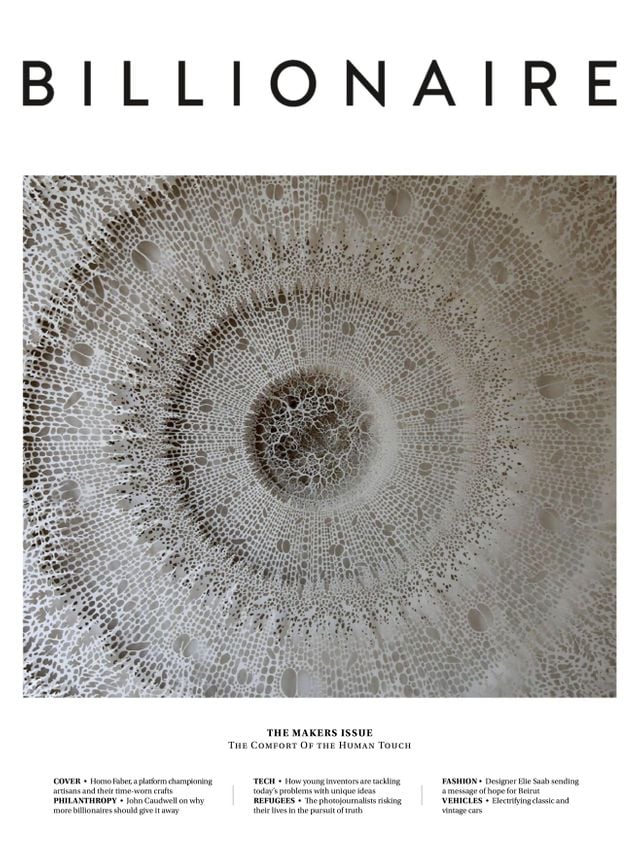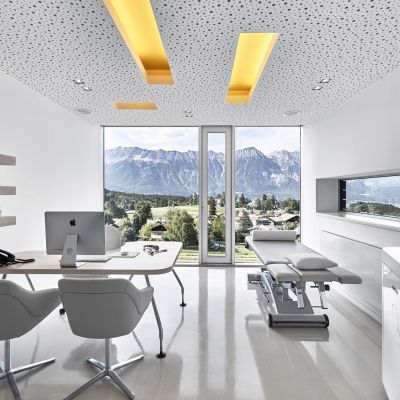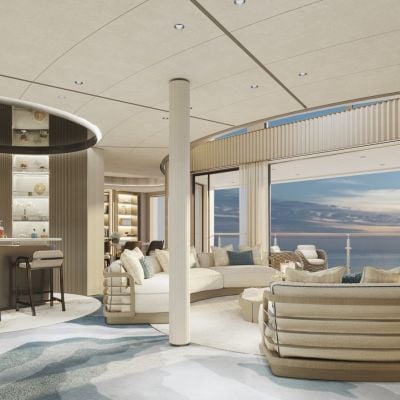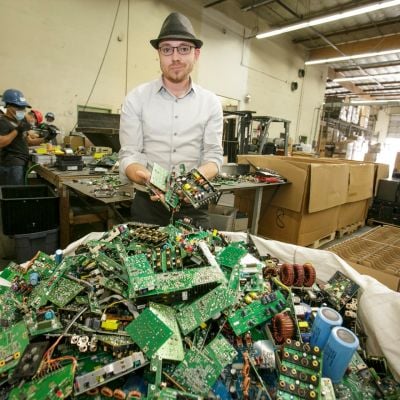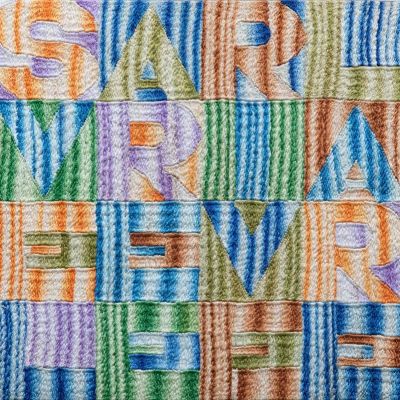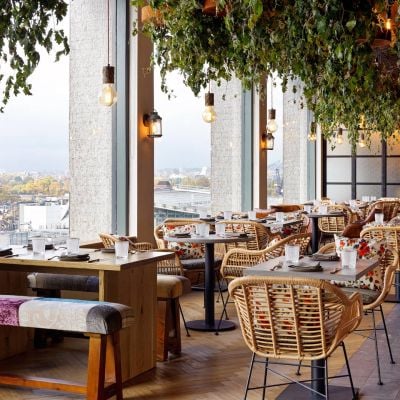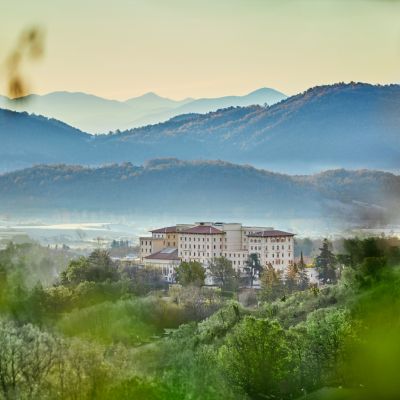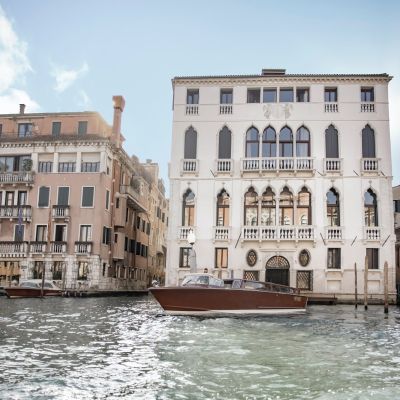Passion For Fashion
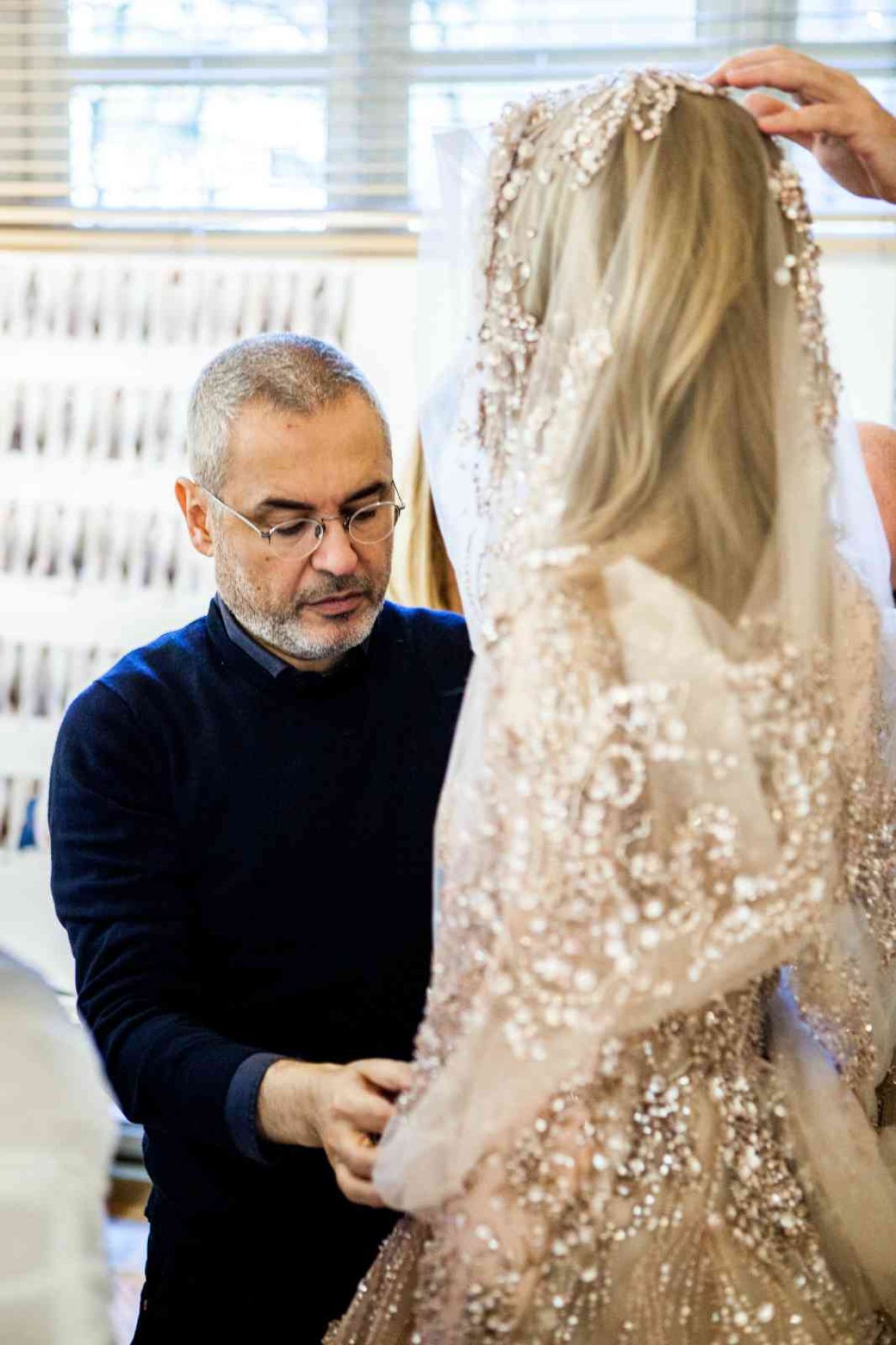
Lebanese fashion designer Elie Saab’s red-carpet-ready masterpieces come from a vision as a child in war-torn Beirut.
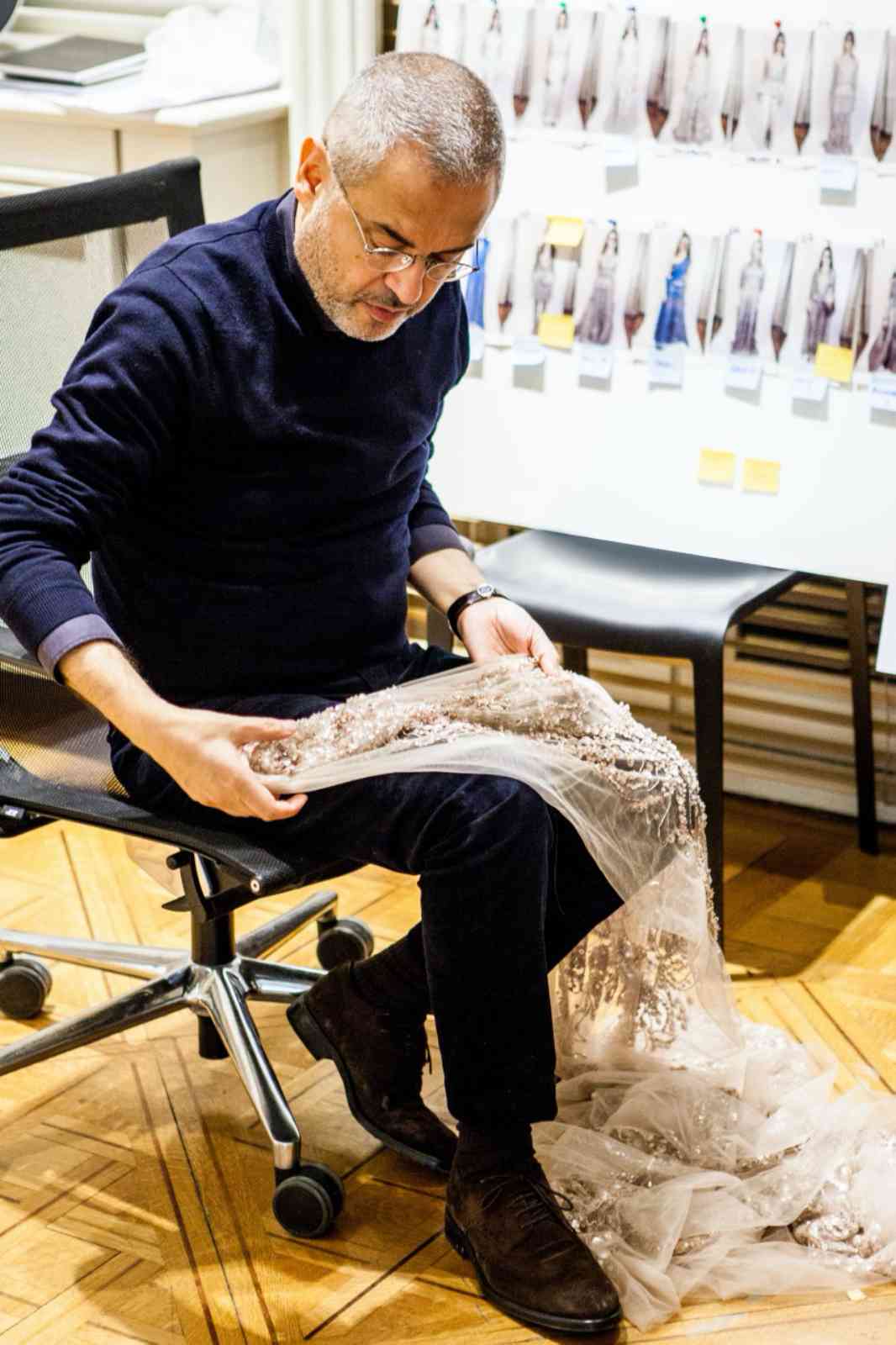
One February morning, a video of Jennifer Lopez shaking her famous booty in a gown of ethereal magnificence is threatening to break the internet. The sparkling, fringed, mermaidesque creation, worn by the performer in a concert to launch her movie, was the brainchild of one of her favourite designers, Elie Saab.
Sat quietly in front of me now, dressed in an understated uniform of black, grey hair close-cut, bespectacled, serious and soft spoken in halting English, Saab appears to represent the polar opposite of his flamboyant creations. These are dresses so fabulous they take on a life of their own as they shimmy down a catwalk or wedding aisle. Bedecked with sequins, beads, Swarovski crystals, lace and silk, rainbow soufflés of taffeta and tulle, full-skirted silhouettes in the whole spectrum, flapping, frivolous feathers and a celebration of whimsy, Elie Saab Couture dresses are among the world’s most expensive, known to attract price tags of up to US$300,000.
Worn by a who’s-who of the world’s most glamorous and admired women, clients of the 57-year-old Lebanese couturier include Kate Middleton, Beyoncé, Brigitte Macron, Angelina Jolie, Kendall Jenner, Heidi Klum, Taylor Swift, Halle Berry, Dame Helen Mirren and many more.
Saab’s vision as a fashion designer came to him as a child, one of five born of a wood merchant in a Beirut suburb. “I was born with it,” he shrugs of his talent. “When I began designing dresses at the age of nine it was easy for me; I just knew how to do it.” Growing up in Lebanon in the 1970s he was surrounded by war, poverty and stress. Looking at the women around him, he felt they would benefit from “more beauty” in their lives. “I love to see women more beautiful than they see themselves.” He began using his sisters as models, pinning together dresses out of newspaper or scraps he found in his mother’s stores. He dropped out after a year of studying fashion in Paris; going on to set up his own atelier that quickly became a hit with Lebanese high society. At the time, there was no such thing as models in Lebanon; he recruited girls from the acting and advertising industries to help him display his first collection.
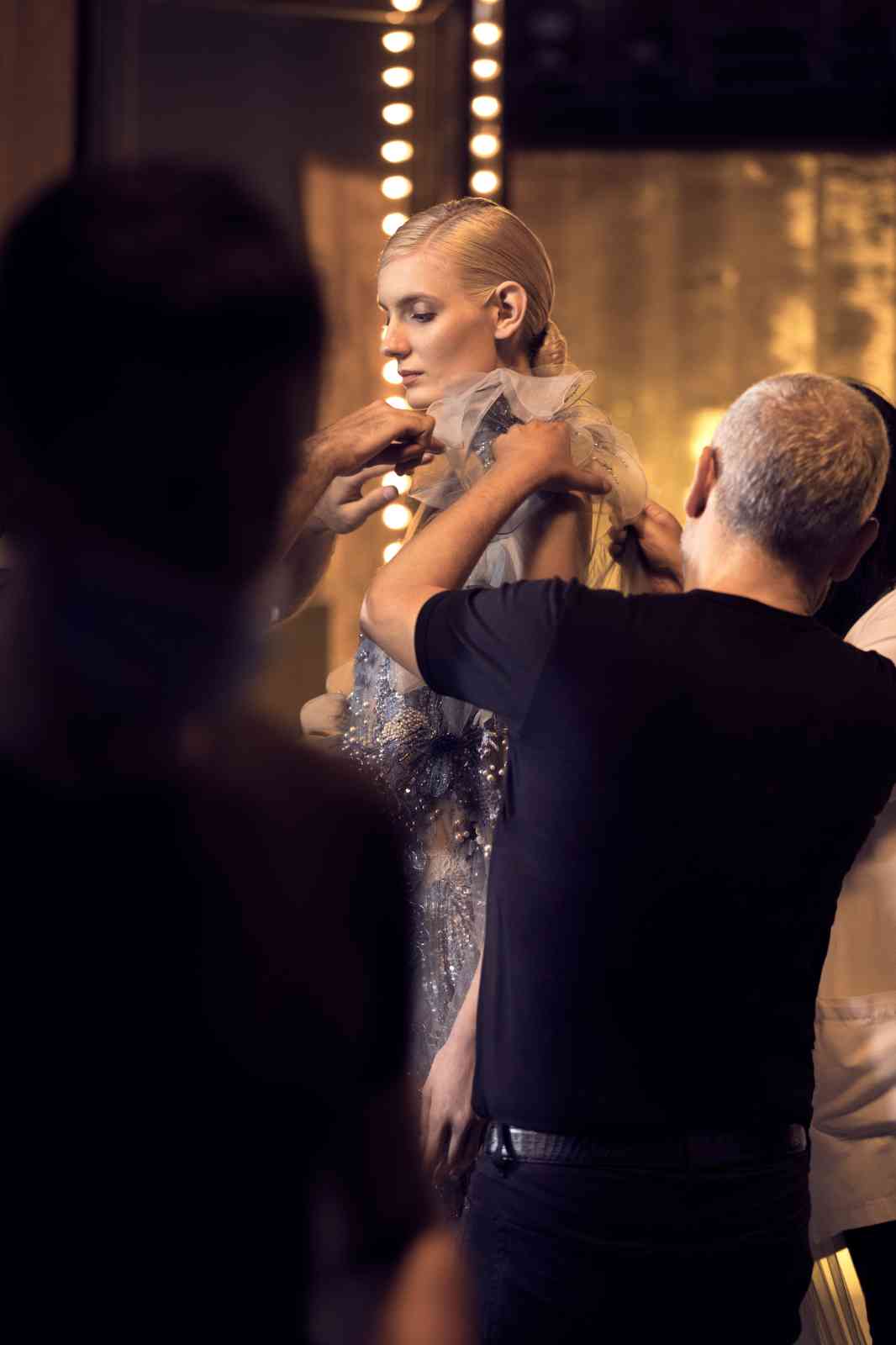
His career became historic; he was the first Arab to be admitted to the fashion industry's governing body, Chambre Syndicale de la Haute Couture; more recently Saab appeared as a judge on Project Runway: Middle East.
His role as a business leader in his home country is just as important to him as his stature in the global fashion world, especially as Lebanon battles its worst economic crisis in decades. In the catastrophic 2020 Beirut explosion, when a substantial quantity of ammonium nitrate stored at the Port of Beirut exploded, Elie Saab’s main office and headquarters were left badly damaged and his home nearby was all but destroyed. His first instinct, along with that of his son, Elie Saab Jr, who is sat next to him and supports him during our conversation, was to get the company back on its feet. They worked tirelessly to rebuild the office so that when staff returned the following week, it could provide a haven of normalcy in the reeling city.
“Just a week after the explosion we had fixed our office,” says Saab. “Our first reflex was to pick all the damage up. It was very important for us to do that, to give the right message to the young entrepreneurs in the country. If they see Elie Saab stand up immediately, it gives a big message of hope in Beirut.” Off the back of the shock, Elie Saab launched an initiative that consists in donating a portion of sales to UNICEF’s Integrated Education and Well-Being for Vulnerable Girls in Lebanon programme. He also mentors some 30 up-and-coming fashion designers annually in collaboration with the London College of Fashion and Lebanese American University.
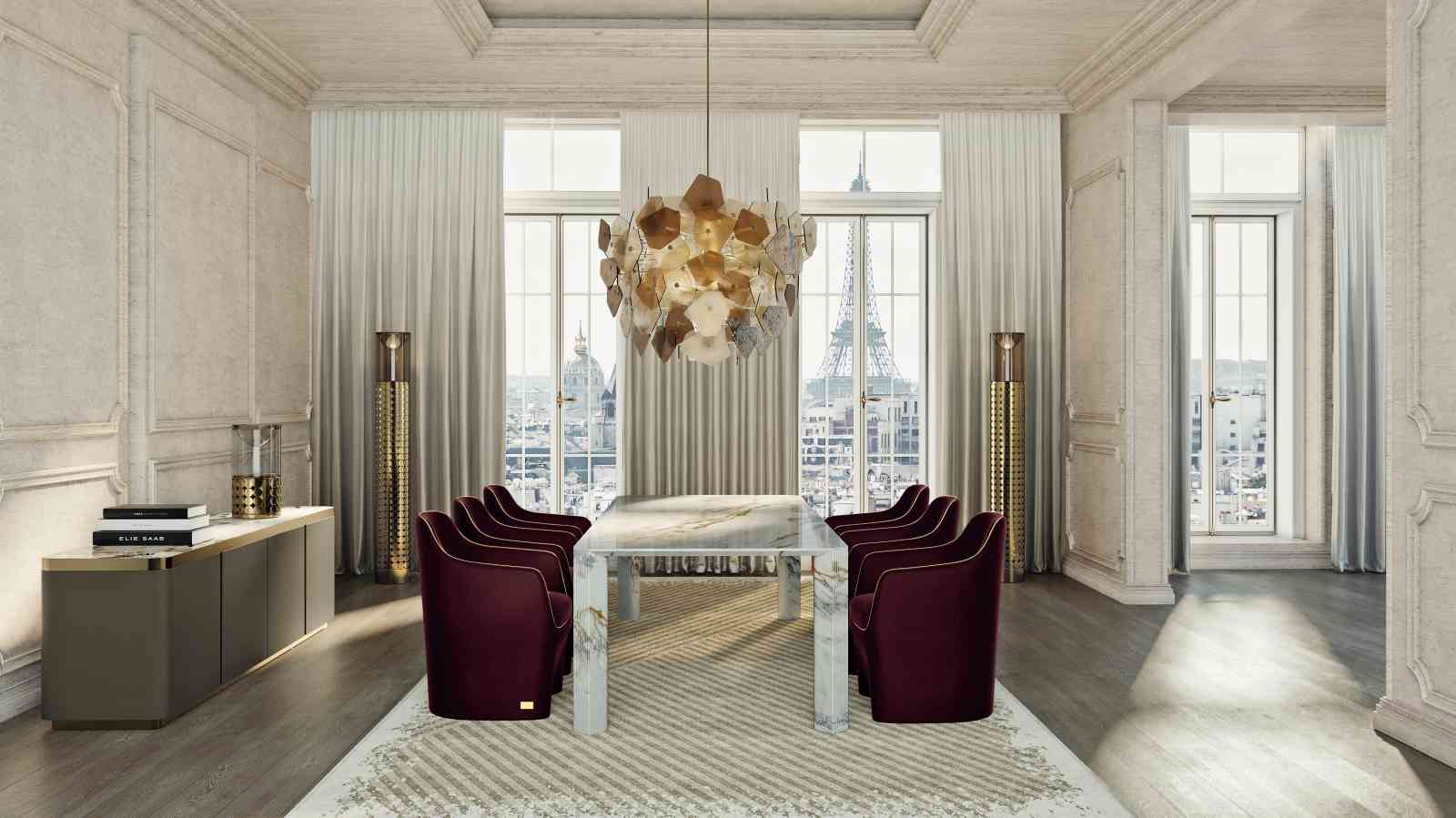
The pandemic meant a two-year hiatus for Saab’s runway show, which he recently unveiled in Paris, but he believes the enforced break was actually a good thing. “I believe the world needed that to cool down and to realise the value of what we have. Before the pandemic there was so much greed and aggression. Now, rather than a lot of things in abundance, people are looking for fewer things, more precise quality, and they’re also looking for joy.”
On the subject of precise quality, Saab is here in London on another mission. He has designed the interiors for a collection of extremely high-end apartments on Bayswater Road, overlooking Kensington Gardens and Hyde Park, his first residence in the UK (although he has worked on four others in Dubai and Egypt and has another five in the pipeline, including one in Vietnam).
The new Elie Saab Residences, due to launch this Autumn, are funded by Gulf Islamic Investments, a financial services firm. The apartments will comprise 15 two- and three-bedroom homes priced at £3 million-plus and two duplex penthouses. Built on the site of a Victorian building from 1893, the classical façade has been rebuilt, adorned with double-height pilasters, Corinthian capitals, and an ornamented cornice. Elie Saab Jr says if past Elie Saab residential projects are anything to go by, they should sell like hot cakes.
The branded residences sector has grown by 230 percent over the past decade, with classic hotel brands, such as Marriott, Ritz Carlton and Yoo, giving way to fashion brands such as Bvlgari and, now, Elie Saab. Today, there are 580 schemes open and the market is forecast to exceed more than 900 schemes by 2026, almost doubling the current supply, according to estate agent Savills. When a residential product is affiliated with a luxury brand, it benefits from the same perceived quality of that brand by association, service, and design. The analysis from Savills shows that the average global premium for branded residences, over a comparable non-branded product, stands at around 29 percent.
For Saab, who has reached the pinnacle of fashion, it is exciting to grow into a different industry. But what makes his face really light up is when I ask him about the birth of his first grandchild, Sophia, who was born to Elie Saab Jr and his wife Christina Mourad Saab in September 2020.
“Sophia is the princess of the house now,” says Saab. “I believe it has changed my perspective in a good way; it was an important moment for me. I feel every age has a beauty and now, as a grandfather, this is a very beautiful time. I have so many blessings.”
This article originally appeared in Billionaire's Maker's Issue. To subscribe contact

